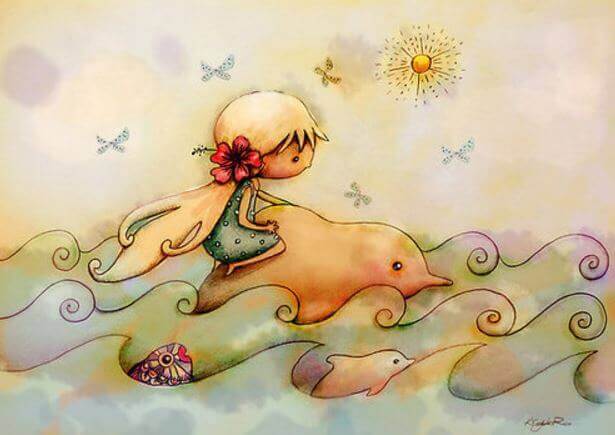“The first task of education is to stir life, but to leave it free for it to develop,” Maria Montessori said more than a century ago. Today, the educational triangle in which its pedagogy and fundamental principles is based is highlighted by neuroscience.
In addition, Steve Hughes, a neuropsychologist and pediatrician, is firmly convinced after years of experience that the Montessori method improves certain brain functions that help expand cognitive development. He even named the method “original brain-based learning system” as his surname.
- Neurological development is improved through learning through the Montessori methodology.
- This claim is supported not only by hundreds of successful development cases since its founding.
- But also by the various discoveries made by today’s neurosciences.
“With his hands, the human being conceives of his surroundings. They’re the tools to execute intelligence. Hands are creative, they can produce things.
Today we know that the resources that the brain uses to process the sensory stimuli it perceives through the hands are far superior to other parts of the body, so we could say that living the world through the hands is tantamount to entering through the big door. of our own brain and, therefore, the latter must play a fundamental role in learning.
In the image, we can see what we call “the motor homoncula and the sensory homoncula”. This term is used to describe a distorted human figure designed to reflect the relative sensory space represented by the parts of our body in the cerebral cortex. , we see how the hands are significantly larger than the other areas.
“Education is a natural process that the child performs and is not acquired by listening to words, but through the experiences of a child in his environment,” María Montessori said.
Encouraging a free and natural life means encouraging children and babies to move and communicate with their environment. Children who learn through Montessori pedagogy spend more time on the road than in traditional schools; that is, an active relationship with the environment is necessary, which promotes greater control of motor, sensory, emotional and cognitive skills.
Thus, the advantage of promoting an active attitude towards the environment makes babies and children more competent when it comes to recognizing the intentions of others, a discovery that is supported by various investigations on the benefits of playing as velcro gauntlets for provoke an intentional action. Encouraging children to do something helps them learn faster than through mere observation, as noted in the 1981 text by Kandel and his colleagues.
Performance functions are those cognitive skills that allow us to manipulate ideas mentally, these mental skills promote the conscious, active, voluntary and effective resolution of problems that arise in daily life.
Learning to be flexible and accepting changes in the environment, concentrating on a task, pursuing a goal, resisting one’s impulses and having information in mind to work with them are essential skills for proper development.
The term “perform functions” classifies these skills into three categories: inhibition, working memory, and cognitive flexibility. If these functions aren’t well developed, disorders such as ADHD or other learning disabilities can be misdiagnosed.
From the Montessori pedagogy, developed in an era when it was not known, we can develop these functions with different activities such as waiting, finding material overcoming a maze formed by colleagues performing other activities, etc. Research shows that children who attended Montessori preschoolers show better performance in this family of mental processes.
Maria Montessori observed that during childhood there were sensitive learning periods. In these moments of evolution there is great neuro-emotional potential and, therefore, education is paramount. In fact, it is essential that in the period between 0 and 11 years, children explore their world as independently as possible.
Thus, in general, we can talk about the creation of the Montessori microcosm or micro worlds, it is about creating a purely childish environment: child-sized furniture, toys that enhance exploration and cognitive flexibility, etc. Neuroscience has identified these stages where the brain needs stimulation to develop.
For children to see and experience the world is the basis of anxiety that instills the Montessori methodology in minors, mirror neurons, located in the frontal lobe, help absorb information from the environment through the senses, this was discovered by Maria Montessori by observation, and then confirmed by the discoveries of these neurons specialized in imitation.
As can be seen, the Montessori method obtains great scientific evidence and must continue to be the subject of extensive research, as it guarantees the creation of a universe based on the affection and respect for the individual rhythms of each child and their environment.

